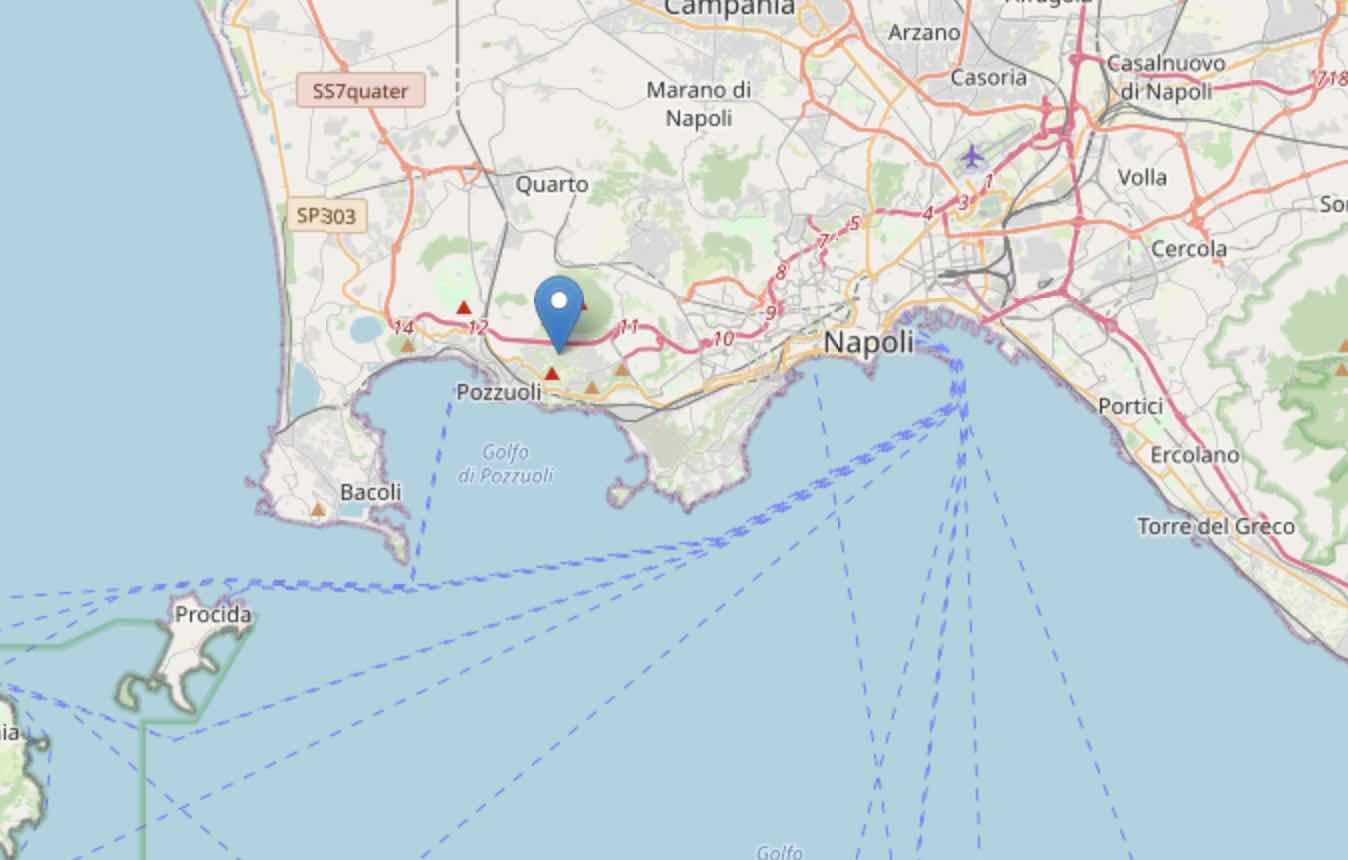
Campi Flegrei earthquake: no significant damage, but concern grows
Nature awakens in the supervolcano area after a series of tremors
During the night of Wednesday 27 September, nature decided to break the silence with a loud roar that shook the Campi Flegrei area. At 3.35am, an earthquake of magnitude 4.2 hit the region, marking the most intense seismic event in the last forty years in this area, as reported by the National Institute of Geophysics and Volcanology (INGV). The epicentre was located in the area of the supervolcano, at a depth of about 3 kilometres.
The news spread quickly, with the Civil Protection reassuring through a tweet, stating that, according to preliminary verifications, no significant damage was reported. However, some minor collapses were reported in one building. The tremor was preceded by several others in the previous 24 hours, creating a growing sense of concern among the local population. Naples and neighbouring municipalities felt the tremor distinctly, with reports also coming in from provinces as far away as Latina, Frosinone, Caserta, Benevento, Avellino, Salerno, Foggia, Rome and Potenza.
Fearing further tremors, many people took to the streets, seeking information and reassurance. Social media acted as a catalyst, allowing residents to share experiences and feelings in real time. This scenario highlighted, once again, how digital communication plays a crucial role in emergency situations.
The situation continues to be monitored
Meanwhile, the Vesuvius Observatory, the Neapolitan branch of the INGV, recorded 64 tremors as part of the seismic swarm that occurred in the morning in the Campi Flegrei area. The epicentres were located in the Accademia-Solfatara area (Pozzuoli) and in the Gulf of Pozzuoli. The observatory’s director, Mauro Antonio Di Vito, explained that these seismic activities are part of the bradyseismic dynamic, which has shown a slight acceleration in recent days, indicating a continuous evolution of the geological situation.
Di Vito also added that, although there are currently no elements that suggest significant evolutions of the system in the short term, any future variations in the monitored parameters could change the hazard scenarios. Continuous monitoring by the Vesuvius Observatory and the Civil Protection Department is intended to ensure the safety and preparedness of the community for possible emergencies.
Amid the chaos, rail traffic to and from Naples was temporarily suspended to allow the necessary checks on the network. The underground lines operated by Ferrovie dello Stato also saw a temporary suspension. As circulation resumed, high-speed trains experienced delays ranging from a minimum of one hour to a maximum of over three hours.
In Pozzuoli, Mayor Gigi Manzoni announced the closure of schools to allow for the necessary checks on school buildings. This prudent decision aims to guarantee the safety of young students and school staff.
In this scenario of growing concern, prudence and timely information remain the communities’ best allies. Nature, once again, reminds us of its unpredictability, but also of the need to always be ready and informed in order to face every eventuality with awareness and responsibility.


